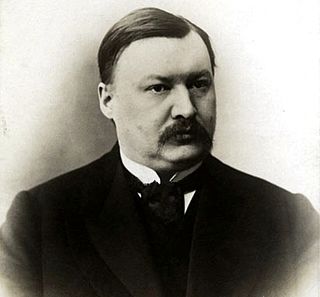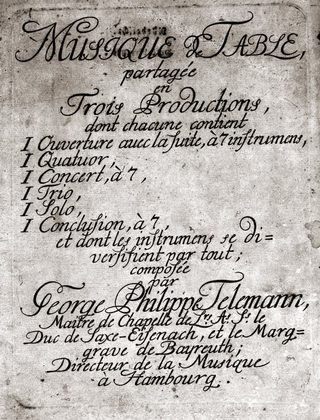Related Research Articles

Aram Ilyich Khachaturian was a Soviet Armenian composer and conductor. He is considered one of the leading Soviet composers.
The Violin Concerto No. 1 in A minor, Op. 77, was originally composed by Dmitri Shostakovich in 1947–48. He was still working on the piece at the time of the Zhdanov Doctrine, and it could not be performed in the period following the composer's denunciation. In the time between the work's initial completion and the first performance, the composer, sometimes with the collaboration of its dedicatee, David Oistrakh, worked on several revisions. The concerto was finally premiered by the Leningrad Philharmonic under Yevgeny Mravinsky on 29 October 1955. It was well-received, Oistrakh remarking on the "depth of its artistic content" and describing the violin part as a "pithy 'Shakespearian' role."

Felix Mendelssohn's Violin Concerto in E minor, Op. 64, MWV O 14, is his last concerto. Well received at its premiere, it has remained among the most prominent and highly-regarded violin concertos. It holds a central place in the violin repertoire and has developed a reputation as an essential concerto for all aspiring concert violinists to master, and usually one of the first Romantic era concertos they learn. A typical performance lasts just under half an hour.

The Piano Concerto No. 21 in C major, K. 467, was completed on 9 March 1785 by Wolfgang Amadeus Mozart, four weeks after the completion of the previous D minor concerto, K. 466.

The Violin Concerto No. 3 in G major, K. 216, was composed by Wolfgang Amadeus Mozart in Salzburg in 1775 when he was 19 years old. In a letter to his father, Mozart called it the "Straßburg-Concert". Researchers believe this epithet comes from the motive in the third movement's Allegretto in the central section, a local dance that already had appeared as a musette-imitating tune in a symphony by Carl Ditters von Dittersdorf.

Alexander Grigori Arutiunian, also known as Arutunian, Arutyunyan, Arutjunjan, Harutyunian or Harutiunian, was a Soviet and Armenian composer and pianist, widely known for his 1950 Trumpet Concerto. A professor at Yerevan State Conservatory, he was recognized with many awards for his work, including the Stalin Prize in 1949 and People's Artist of the USSR in 1970, as well as numerous honors from his homeland of Armenia.
Béla Bartók's Violin Concerto No. 1, Sz. 36, BB 48a was written in the years 1907–1908, but only published in 1956, 11 years after the composer's death, as "Violin Concerto No. 1, Op. posth." It was premiered on 30 May 1958 in Basel, Switzerland.

The Violin Concerto in A minor, Op. 82, by Alexander Glazunov is one of his most popular compositions. Written in 1904, the concerto was dedicated to violinist Leopold Auer, who gave the first performance at a Russian Musical Society concert in St. Petersburg on 15 February 1905. The British premiere of the concerto followed just over a year later, under the direction of Sir Henry Wood and with Mischa Elman as soloist. The American premiere of the work was not until 27 October 1911. It was performed by Efrem Zimbalist at his American debut with the Boston Symphony Orchestra.

The Piano Concerto No. 18 in B♭ major, K 456 is a piano concerto by Wolfgang Amadeus Mozart. In Mozart's own catalogue of his works, this concerto is dated 30 September 1784.
Aram Khachaturian's Piano Concerto in D-flat major, Op. 38, was composed in 1936. It was his first work to bring him recognition in the West, and it immediately entered the repertoire of many notable pianists.
Antonín Dvořák wrote his String Quartet No. 10 in E♭ major, Op. 51 (B. 92), in 1879 at the request of Jean Becker, the leader of the Florentine Quartet. It is sometimes nicknamed the Slavonic Quartet. The quartet was dedicated to Jean Becker; it was first performed by the Joachim Quartet at a private chamber music evening on July 29, 1879, in Berlin. It was published by Simrock, Berlin, in 1879.

Dmitri Shostakovich composed his Sonata for Violin and Piano in G major, Op. 134 in the autumn of 1968 in Moscow, completing it on October 23. It is set in three movements and lasts approximately 31 minutes. It is dedicated to the violinist David Oistrakh, who premiered the work on May 3, 1969 in the Large Hall of the Moscow Conservatory.
Aram Khachaturian wrote his Cello Concerto in E minor in 1946 for Sviatoslav Knushevitsky. It was the last of the three concertos he wrote for the individual members of a renowned Soviet piano trio that performed together from 1941 until 1963. The others were: the Piano Concerto for Lev Oborin (1936); and the Violin Concerto for David Oistrakh (1940).

The Violin Sonata No. 2 in A major, Op. 100, by Johannes Brahms was written while spending the summer of 1886 in Thun in the Bernese Oberland, Switzerland.
The Guitar Concerto No. 2, Op. 394, is a concerto for classical guitar and string orchestra by the American composer Alan Hovhaness. The work was commissioned by the Spanish guitarist Narciso Yepes. It was completed in June 1985 and later premiered at the Granada Festival in 1990.

The Symphony No. 2 in E minor, is one of the Armenian composer Aram Khachaturian's most well-known pieces of music. Completed in 1943, it was nicknamed The Bell or Symphony with Bells by Georgi Khubov for its bell motif that begins and ends the piece. A typical performance lasts about 50 minutes.

The Hungarian composer György Ligeti published three string quartets: two string quartets proper and a student piece from 1950 published toward the end of his life. The first two quartets represent his early period, inspired by Béla Bartók, and middle period, which was largely micropolyphonic.

Tafelmusik is a collection of instrumental compositions by Georg Philipp Telemann (1681–1767), published in 1733. The original title is Musique de table. The work is one of Telemann's most widely known compositions; it is the climax and at the same time one of the last examples of courtly table music.
References
- ↑ Khachaturian: Violin Concerto / Concerto-Rhapsody (Naxos 8.555919) Liner Notes
- ↑ Khachaturian: Violin Concerto / Concerto-Rhapsody for Violin and Orchestra (Naxos 8.570988) Liner Notes
- 1 2 "BeavertonSymphony.org :: program notes Khachaturian Violin Concerto". beavertonsymphony.org.
- 1 2 3 4 Khachaturian, Violin Concerto, EMI CDC 7 47087 2, CD liner notes by Geoffrey Norris
- 1 2 3 4 5 "KHACHATURIAN violin concerto, Concerto-Rhapsody Naxos 8.555919 [RB][KS]: Classical CD Reviews- May 2004 MusicWeb(UK)". www.musicweb-international.com.
- ↑ "Aram Khachaturian Violin Concerto + Dimitri Shostakovich String Quartets". 17 October 2014.
- ↑ "Error | Kennedy Center".
- ↑ flute4u.com
- ↑ violamusicplus.com